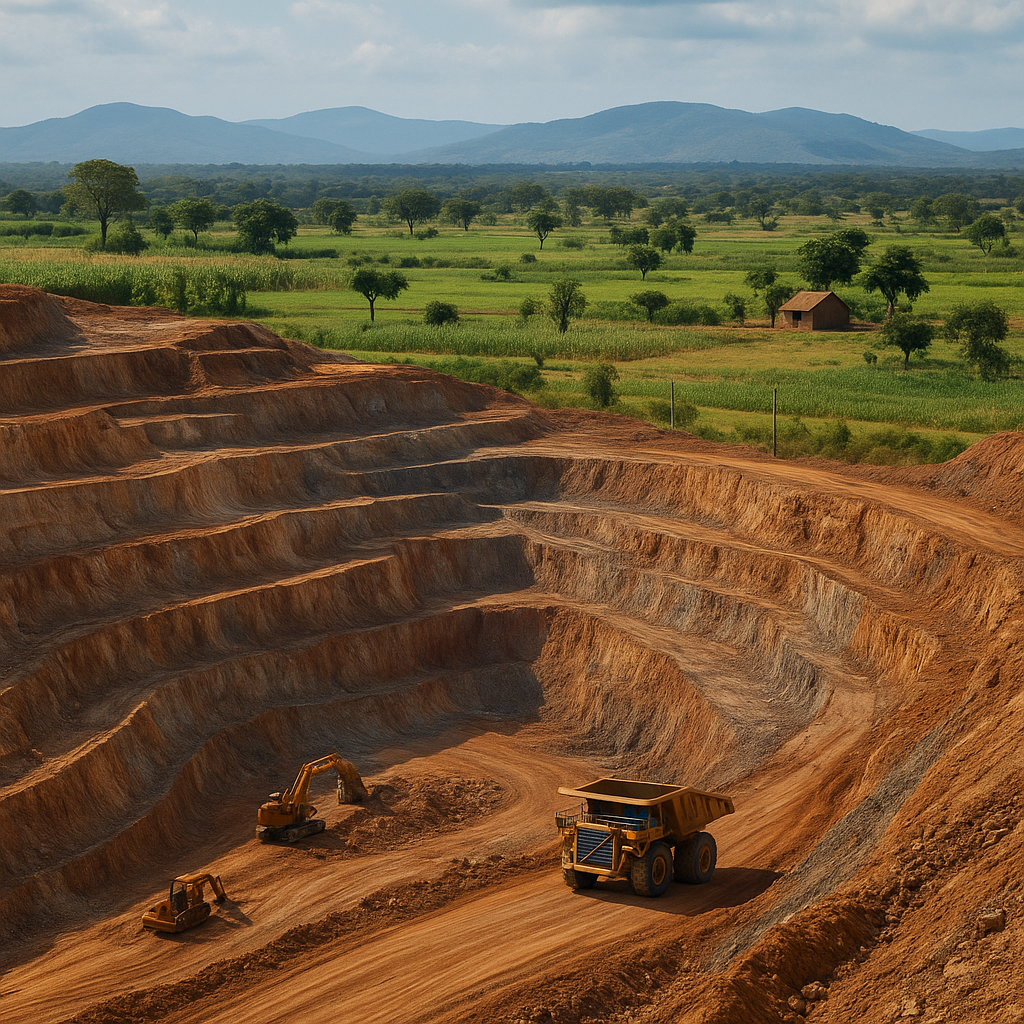Zambia Defies Drought and Inflation to Post 4% Growth in 2024
A powerful recovery in Zambia’s mining sector—driven largely by increased copper output—was a primary contributor to growth.

- Country:
- Zambia
Despite the harshest drought in decades and energy insecurity, Zambia’s economy grew by 4% in 2024, according to the newly released Zambia Economic Update (ZEU) from the World Bank Group. Titled "Leveraging Energy Transition Minerals for Economic Transformation," the report highlights how a mining rebound and service sector expansion propelled growth amid mounting challenges.
Mining Revival and Service Expansion Anchor Growth
A powerful recovery in Zambia’s mining sector—driven largely by increased copper output—was a primary contributor to growth. Despite global economic uncertainty and climatic shocks, the service sector also demonstrated notable expansion, reinforcing Zambia's resilience. This performance reflects strong institutional management amid turbulence, particularly in fiscal policy.
The government’s prudent fiscal strategy was central to navigating 2024's drought-induced crisis. Increased copper production and tight controls on investment spending enabled Zambia to register a substantial primary surplus, despite increased expenditure pressures. This was achieved within the framework of an IMF-supported program and ongoing debt restructuring efforts.
“Revenues increased thanks to expanded copper production—although they remain below potential— and investment spending was significantly reduced,” noted Albert Pijuan, Senior Country Economist for Zambia at the World Bank.
Agriculture Falters Under Climate Pressure
Agriculture, which provides livelihoods for the majority of Zambia’s population, faced a significant downturn due to the drought and its reliance on rainfed farming. While its contribution to GDP is comparatively low, the sector’s performance directly impacts poverty and food security. Consequently, even as overall GDP grew, GDP per capita only rose by 1.2%, and poverty remained deeply entrenched, with 63.1% of Zambians living on less than $2.15/day.
Inflation and Currency Pressures Persist
The ZEU underscores persistent inflation, fueled by exchange rate depreciation and rising food and energy prices. Despite tightening monetary policy, inflation remained in double digits as external shocks and structural inefficiencies kept prices elevated. The kwacha weakened due to sporadic foreign exchange availability and increased import demand amid the drought.
The result: Zambia now faces negative real interest rates, raising concerns about inflation expectations and central bank credibility. Monetary policy remains cautiously accommodative, reflecting the dominance of supply-side inflation pressures.
Bright Outlook, But Risks Loom
Looking ahead, Zambia’s economic outlook appears optimistic. The World Bank projects continued strength in mining, a moderate rebound in agriculture, and tourism-driven growth. However, downside risks remain, including:
-
Global economic slowdown
-
Uncertain trade policy environment
-
Recurrent climatic shocks
-
Underperformance in public sector efficiency
The ZEU emphasizes that while mining will remain central, Zambia must diversify to achieve sustainable transformation. The service sector and agriculture need revitalization, and institutional reforms must underpin public investment and revenue management.
Strategic Role of Energy Transition Minerals (ETMs)
A special focus of this ZEU edition is Zambia’s potential to leverage its ETM deposits—especially copper, cobalt, and manganese—for structural transformation. The global energy transition presents a rare window of opportunity, as demand for these minerals skyrockets.
The World Bank and the Government of Zambia have jointly developed a roadmap, Repositioning Zambia to Leverage Energy Transition Minerals for Economic Transformation, which lays out strategies to capitalize on this opportunity. Backed by the Resilient and Inclusive Supply Chain Enhancement Partnership (RISE) initiative, the roadmap aims to:
1. Scale ETM Production
-
Invest in infrastructure (transport, logistics, power)
-
Upskill workforce and manage environmental risks
-
Ensure mineral mapping and streamlined permitting
2. Maximize Fiscal Impact
-
Close tax loopholes and strengthen mining revenue oversight
-
Allocate revenues strategically for long-term development
3. Promote Local Value Addition
-
Build out the copper value chain through smelting, refining, and component manufacturing
-
Address barriers like lack of raw material access, unreliable power, and limited finance
4. Ensure Inclusive Participation
-
Empower local communities and businesses to participate across the value chain
-
Integrate climate and social safeguards into mining policies
Path Forward: Reform, Diversify, Transform
In addition to its ETM roadmap, the ZEU outlines broader reforms to support long-term prosperity:
-
Agricultural productivity: Fully implement the e-voucher system, target better subsidies, and attract private investment.
-
Energy sector efficiency: Boost competition and resolve supply constraints.
-
Tax administration: Strengthen institutional capacity to raise non-mining revenue.
-
Monetary policy discipline: Maintain a tight stance to stabilize inflation expectations.
Zambia stands at a pivotal crossroads. With natural resource wealth, a growing service base, and improved macroeconomic governance, it has the tools to chart a path to inclusive and sustainable growth. But success depends on accelerating reforms, climate adaptation, and bold investment in its people and sectors beyond mining.
As Achim Fock, World Bank Country Manager for Zambia, concluded:
“Zambia has the potential to use its energy transition mineral endowments for growth, economic development, and shared prosperity—but it must be carefully stewarded and integrated into a broader strategy of economic transformation.”
ALSO READ
Wholesale Price Inflation: A Cooling Economic Indicator
Wholesale price inflation dips to 0.39 pc in May from 0.85 pc in April: Govt data.
Wholesale Inflation Hits 14-Month Low Amid Price Easing
Bond Yields Tame as Inflation Concerns Ease: A Global Outlook
India's Wholesale Price Inflation Hits 14-Month Low Amid Easing Food and Fuel Prices










